Resolutions Adopted by the 104th Session of the Maritime Safety Committee (MSC 104)(Part 2): Amendments to the International Code for the Construction and Equipment of Ships Carrying Liquefied Gases in Bulk (IGC Code)
The subject-matter of IMSML Website Article 5/2022 [1] is IMO’s 104th Session of the Maritime Safety Committee’s Resolution MSC.492(104). It is the fifth article in this new series. In particular, Resolution MSC.492(104) provides revised standards for a ship’s survival capability and the location of its cargo tanks under Chapter 2 of the International Code for the Construction and Equipment of Ships Carrying Liquefied Gases in Bulk (“IGC Code”).
The IGC Code, which was adopted by resolution MSC.5(48), has been mandatory under SOLAS chapter VII since 1 July 1986, see https://www.imo.org/en/OurWork/Safety/Pages/IGC-Code.aspx (accessed on 27 September 2022). The IGC Code applies to ships of all sizes (even smaller vessels of less than 500 gross tonnage), carrying liquefied gases having a vapour pressure exceeding 2.8 bar absolute at a temperature of 37.8°C (see Chapter 01 General, 1.1 Application).
These ships are designed to carry gases from isoprene to propane, and sulphur dioxide to vinylidene chloride, to name a few chemicals listed in Chapter 19 (which is titled ‘Summary of the Minimum Requirements’). The IGC Code takes into account the dangers of carrying chemicals under pressure and/or refrigeration. Hence, great care must be given to construction materials (see Chapter 06), cargo pressure and temperature control (see Chapter 07), cargo tank vent systems (see Chapter 08), fire protection and fire extinction (see Chapter 11), instrumentation for gauging and gas detection (see Chapter 13) as well as filling limits for cargo tanks (see Chapter 15).
Regarding the specific details of the revised Chapter 2 of the IGC Code, MSC.492(104) provides the following amendment provision in relation to any stage of flooding under Paragraph 2.7.1.1,:
[1] The waterline, shall be below the lower edge of ‘any opening’ through which progressive flooding or down flooding may take place. Note that this takes into account sinkage, heel and trim.
[2] The openings referred to above include air pipes and openings that are closed by means of weathertight doors or hatch covers.
[3] The openings referred to above, may exclude:
(a) Those openings closed by means of watertight manhole covers;
(b) Watertight flush scuttles;
(c) Small watertight cargo tank hatch covers that maintain the high integrity of the deck;
(d) Remotely operated sliding watertight doors; and
(e) Hinged watertight access doors with open/closed indication locally and at the navigation bridge; which can be of the quick-acting or single-action type that are normally closed at sea, hinged watertight doors that are permanently closed at sea, and side scuttles of the non-opening type.
In particular, ‘flooding’ above is based on ‘flooding assumptions’ (see Paragraph 2.7.1) take into consideration:
[1] The design characteristics of the ship;
[2] The arrangements, configuration and contents of the damaged compartments;
[3] The distribution, relative densities and the free surface effects of liquids; and
[4] The draught and trim for all conditions of loading.
The remaining parts of Paragraph 2.7 of the IGC Code deal with permeabilities of spaces (see Paragraph 2.7.2), consequences of penetration damage to a tank filled with fluids (see Paragraph 2.7.3), the manner in which transverse watertight bulkheads handle damage (see Paragraph 2.7.4), keeping unsymmetrical flooding to a minimum (see Paragraph 2.7.5), equalisation arrangements requiring mechanical aids (see Paragraph 2.7.6), prevention of progressive flooding through pipes, ducts, trunks or tunnels (see Paragraph 2.7.7), and buoyancy of the superstructure (see Paragraph 2.7.8). When a ship complies with all these requirements, it should be watertight where necessary, be in a position to safely carry the required cargo and survive the inevitable challenges that the sea brings forth.
MSC.492(104) only comes into force on 1 January 2024. Hence, just as with MSC.491(104) which deals with loadlines, which also comes into force on the same date, the shipping industry has slightly more than a year to put in place plans and execute measures for compliance. The IGC Code aims to ensure that there is good quality construction of vessels carrying liquified gas in bulk.
It is important to note that poorly constructed ships could be held to be unseaworthy, e.g., a ship having weakness in the shell plating (see The Magnolia [1955] 1 Lloyd’s Rep. 417), and weakness in the stern frame (see Hutchins Brothers v Royal Exchange Ass. Corp. [1911] 2 K.B. 398). The IGC Code is a modern regulatory regime that carries on in the classic tradition of ensuring that vessels remain seaworthy and/or cargoworthy. If a breach of the International Safety Management Code (ISM Code) (applicable via the Safety of Life at Sea Convention 1974) can be evidence that a ship is unseaworthy (see The Eurasian Dream [2002] 1 Lloyd's Rep. 719), arguably, a breach of the IGC Code equally provides evidence that a ship is unseaworthy.
Stay tuned for the next IMSML Website Article 6/2022:
Resolutions Adopted by the 104th Session of the Maritime Safety Committee (MSC 104)(Part 3): Amendments to The Performance Standards for Shipborne Simplified Voyage Data Recorders (S-VDRs) (Resolution MSC.163(78)), as Amended)
Signing-off for today,
Dr Irwin Ooi Ui Joo, LL.B(Hons.); LL.M (Cardiff); Ph.D (Cardiff); CMILT
Professor of Maritime and Transport Law
Head of the Centre for Advocacy and Dispute Resolution
Faculty of Law
Universiti Teknologi MARA Shah Alam
Selangor, Malaysia
Wednesday, 5 October 2022
Note that I am the corresponding author for the IMSML Website Articles. My official email address is: uijoo310@uitm.edu.my
Edited by Trishelea Ann Sandosam, Vice President, IMSML
